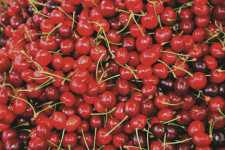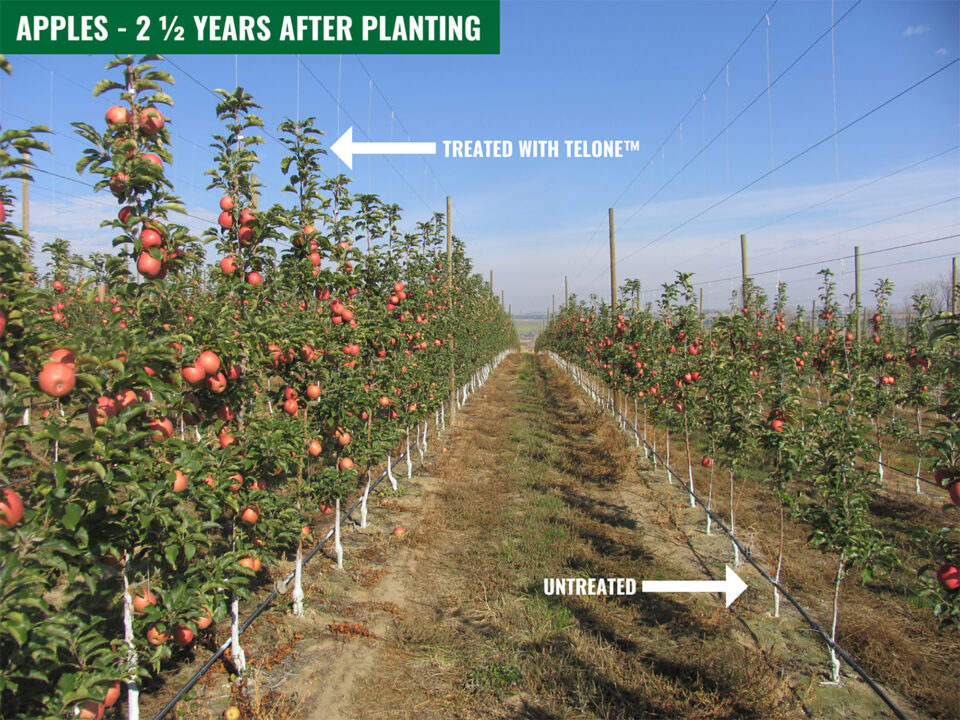MSU Closing In On High-Density Tart Cherries

The tart cherry orchard of the future may still be a few years away, but Michigan State University (MSU) researchers have moved a few steps closer to growing high-density tart cherries. In fruit growing regions around the world, horticultural innovations are rapidly impacting cherry industries and orchards. Namely, new dwarfing rootstocks have facilitated high-density sweet cherry orchards by instigating earlier initial and peak production than trees on standard rootstocks. These more intensive orchards also impact the efficiency of production, improve fruit quality, and are harvested more easily. With the success of high-density sweet cherry orchards, such concepts need to be investigated further for Michigan tart cherries.
Moving to high-density tart cherry production systems for fruit used in the processing market is easier said than done as several production components will require changes. The MSU team is concomitantly evaluating rootstocks, cultivars, tree spacing, irrigation, and fertilization strategies for this new system. Tree training and pruning strategies also will be developed to optimize yields without sacrificing fruit quality.
In spring 2010, we planted a high-density Montmorency block where we are evaluating the dwarfing, precocious Gisela rootstocks currently used by growers around the world for sweet cherry production. To gain a better understanding of Montmorency on dwarfing rootstocks planted at a high density, we planted Montmorency on its own roots, and also grafted it onto four commercial rootstocks: Gisela 3, Gisela 5, Gisela 6, and Mahaleb. All five rootstocks are being managed with two pruning systems: multiple leader bush and central leader axe.
This past spring, two more plantings were put in at the Northwest Michigan Horticultural Research Center (NWMHRC). The first planting is a new rootstock trial where we are looking at elite rootstock selections from the MSU germplasm bank. Dr. Amy Iezzoni has been breeding rootstocks for use in sweet cherry, and many growers were interested to see how they do under tart cherry. The NWMHRC Foundation purchased the trees in this trial as they thought evaluating these new rootstocks was critical to the success of our futuristic orchard. This planting also includes new Russian rootstocks from the Krymsk series. Growers and nurseries in the west have used Krymsk rootstocks for sweet cherries, but there is little information about these rootstocks under tart cherry.
Moving Forward
A second new planting of Montmorency-type tart cherry varieties was planted in early May. The new cultivar planting will include five elite selections from Iezzoni’s tart cherry breeding program. At this stage, these cherries still have numbers rather than names, but members of the Tart Cherry Advisory Committee can confirm that these fruits have promise for commercial marketing. Dr. Ron Perry has also been instrumental in bringing some of the tart cherries bred in Saskatchewan, Canada to Michigan. These fruits have names like Crimson Passion and Carmine Jewel. We hope to also obtain some of their newest releases, such as Cupid, Romeo, Juliet, and Valentine.
We have also been investigating different harvesting systems for this futuristic orchard. The primary goal of this research is to allow growers to harvest trees earlier than the five to seven years traditionally required for trees to mature enough to withstand trunk shaking. This earlier harvest would allow growers to receive an earlier return on their investment. Using high-density apples as a model, we would like to begin harvesting tart cherries at two or three years old rather than five to seven; therefore, if we continue to harvest cherries mechanically, we need a harvester that does not “shake” the trees. We have evaluated continuously moving harvesters in tart cherry that were designed for other crops, such as olives, citrus, grapes, and blueberries. Many of these machines look promising for use in a high-density tart cherry orchard.
With rootstock, cultivar, and high-density Montmorency trials in place, and by continuing to look at harvesting systems, we are poised to make some inroads into this new system. The MSU team working on this project includes Iezzoni, Perry, Greg Lang, Jim Flore, and Nikki Rothwell.
Tell Us What You Want
The goal of the Michigan State University (MSU) tart cherry breeding program is to improve the profitability of the tart cherry industry by developing varieties that will help growers effectively address production and market-based fruit quality challenges. This is done by identifying individuals among MSU’s tart cherry seedlings and imported varieties that demonstrate potential as commercial varieties by evaluating selections for bloom and maturity dates, fruit quality, cherry leaf spot resistance, and performance of grafted trees at test sites.
Fortunately, RosBREED is there to help in this process. RosBREED is a nationwide collaborative research projective that was funded in 2009 by USDA’s Specialty Crop Research Initiative to accelerate the delivery of new cultivars which have improved fruit flavor and texture. There are 12 U.S. Rosaceous breeding programs representing apple, sweet cherry, tart cherry, strawberry, and peach that are working toward this goal and are located in the top U.S. growing regions for these crops. RosBREED’s approach is to improve the efficiency and success of these breeding programs through the targeted use of diagnostic DNA tests. The power of diagnostic DNA tests will move selection from the orchard to the greenhouse. Therefore only seedlings predicted to be elite are planted in the orchard for further evaluation.
For more information on RosBREED, including recent grower surveys this winter, go to www.rosbreed.org.










